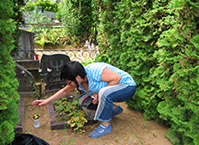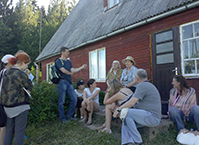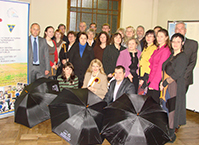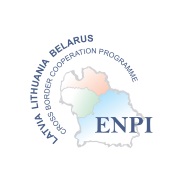About the acorn drink and dandelion root drink.
Categories: Dagnija Bramane
You, Dagnija, use the old time recipes to prepare acorn drink and dandelion root drink, which are called acorn or dandelion coffee, don’t you?
Yes, it’s a fact that I like to experiment and invent something new or rediscover the old. I do make the so-called acorn coffee. The recipe is very simple; I got it from my grandmother, too. We collect acorns in autumn, immerse them in water for three days and change water every day. Then we immerse them in milk or cream for three days – in the same way we again change that milk or cream every day. Then we peel the acorns of their coats and put to roast in the oven or the bread oven. And, when they are roasted brown, we take them out and when they cool, we can mill them and make that coffee. Acorn coffee is usually boiled in milk, similarly to cocoa: milk is boiled in a saucepan, then acorn coffee is added, then you boil everything together for a little while, acorns better draw in this way, and then you add sugar and milk, and the drink is ready.
There is another possibility: we simply pour water over acorn coffee as making usual coffee – we make it with water and let it draw. And then, you can drink it without anything, you can taste what it is. And one year it happened so that there were no acorns. Such years sometimes happen that oak-trees do not have acorns; and then I decided to try and make coffee from dandelion roots. People earlier also made various drinks – chicory and others, and there was a recipe of coffee made from dandelion roots. In autumn or in spring, I won’t say exactly when, you should collect dandelion roots, they should be washed, peeled and cut into pieces; then you desiccate and roast them; they are also milled and then they are used to make coffee similarly as from acorns. If compared, the acorn coffee is much more delicious that the one made from dandelion roots, but the taste of dandelion coffee is interesting and you will hardly find in any other foodstuffs. The taste is sharp and a bit bitter, it’s interesting. It is worth experimenting. You can try to make something like that yourself.
Audio
Researcher: Dr. philol. Valentīns Lukaševičs, Daugavpils Universitāte










